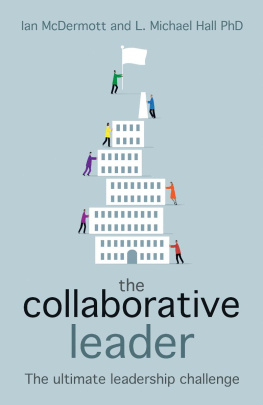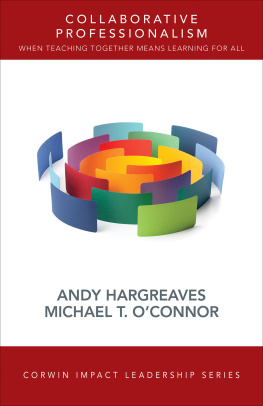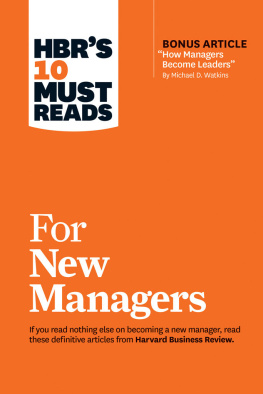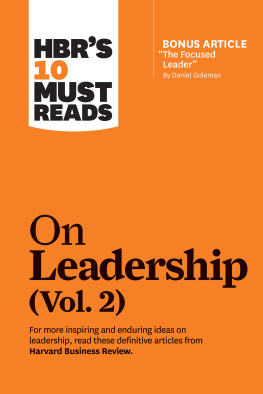
ALSO BY KATHERINE ELLISON
Square Peg: My Story and What It Means for Raising Innovators, Visionaries, and Out-of-the-Box Thinkers
Buzz: A Year of Paying Attention
The Mommy Brain: How Motherhood Makes You Smarter
The New Economy of Nature: The Quest to Make Conservation Profitable
Imelda: Steel Butterfly of the Philippines
Loving
Learning

How Progressive Education
Can Save Americas Schools

TOM LITTLE and
KATHERINE ELLISON
FOREWORD BY AYELET WALDMAN


Copyright 2015 by Katherine Ellison and the Estate of Tom Little
Foreword copyright 2015 by Ayelet Waldman
All rights reserved
First Edition
For information about permission to reproduce selections from this book, write to Permissions, W. W. Norton & Company, Inc., 500 Fifth Avenue, New York, NY 10110
For information about special discounts for bulk purchases, please contact W. W. Norton Special Sales at specialsales@wwnorton.com or 800-233-4830
Book design by JAM Design
Production managers: Devon Zahn and Ruth Toda
ISBN 978-0-393-24616-2
ISBN 978-0-393-24617-9 (e-book)
W. W. Norton & Company, Inc.
500 Fifth Avenue, New York, N.Y. 10110
www.wwnorton.com
W. W. Norton & Company Ltd.
Castle House, 75/76 Wells Street, London W1T 3QT

O ne afternoon, while waiting for my youngest son to exhaust himself clambering up the face of a rock wall, I decided to count the number of schools with which Ive been associated, both as a student and as a parent: fourteen. Fourteen schools that run the gamut of ideologies and philosophies. Progressive schools, traditional schools, religious schools. Public schools and private schools. And in all those many years and all those many institutions, I had not met anyone like Tom Little.
Tom understood children on a profound, intuitive level. Within a few weeks of enrolling our three younger children at Park Day School, we had a meeting with Tom in which he flabbergasted us with his insight into each of them. He saw them in the way no one had before. He saw how they learned, what means and methods best suited them. He saw their place in the group of children, how they communicated and participated. He knew just what he, their teachers, and we needed to do to make room for our children to experience joyful learning . In many ways, Tom Little saw our children more clearly than we did ourselves.
More than that, Tom took delight in our children. He was tickled pink by childrenours and everyone elsesgenuinely fascinated by how they thought and felt, by what they said and did. And his delight was infectious. It reminded you why you wanted to be a parent in the first place. He would, even in the most anxiety-provoking of atmospheres, the dreaded parent-teacher meeting, crack one of his massive smiles at something a child had said or done, shake his shaggy head in rueful, appreciative admiration, and make you feel not only that everything was going to be just fine, but that your child was something precious and magical, a person with the capacity to do good in the world.
Doing good in the world meant everything to Tom. His fervor and relentless drive to make a difference were critical in forging a remarkable school, a place where learning is defined both by joy and by empathy. The book you are about to read shows that Toms insight extended beyond the individual child to the project of education as a whole. His decades as not merely the head of Park Day School but its heart and soul gave him a perspective on the project of education that is critically important right now, in this period in which our society is in the throes of a terrible anxiety about education.
Last night I sat in a crowded theater with hundreds of Toms friends and colleagues, the parents of children whose lives he shaped, and the children who were transformed by his insight and the joy with which he undertook the project of their education. This book proves that Tom was, as one speaker said, the preeminent voice of Progressive Education in this country. He was, as another pointed out, hopeful, relentless, and dedicated to the project of education and to children. But the thing that people said again and again was that Tom was profoundly gifted at gratitude . At Park Day there is a tradition that, at the close of every event or performance, whether it be a class play or simply a story read aloud, students give one another what they call Appreciations. They point out the elements in which they took pleasure, or which caused them to think more deeply or to see things in a new way. This foreword is an appreciation of Tom, an expression of my gratitude that he was a part of my life and the lives of my children, albeit for too brief a period, and that he had the strengththe relentlessness to complete the task of finishing his book so that many others can benefit from his wisdom. But far more important, the work you hold in your hands is Tom Littles own Appreciation. It is his Appreciation of children and of the magnificent project of educating them.
In this wonderful book, Tom Little shows us how to embrace our history and restore delight to the process of learning. Even as we grieve our loss, those of us who were blessed with his compassionate insights and joyful presence are thrilled that these will now be shared with the community at large.
Loving
Learning

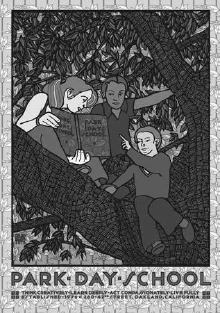
Park Day School poster created by David Lance Goines.
To imposition from above is opposed expression and cultivation of individuality; to external discipline is opposed free activity; to learning from texts and teachers, learning through experience; to acquisition of isolated techniques by drill is opposed acquisition of them as means to attaining ends which make direct vital appeal; to preparation for a more or less remote future is opposed making the most of the opportunities of present life; to static aims and materials is opposed acquaintance with a changing world.
JOHN DEWEY: Experience and Education , 1938
C ome with me on a tour of Park Day School, where Ive been privileged to work for the past thirty-eight years, first as a teacher and then as head of school. Throughout that time, our school, spreading over four shady acres in downtown Oakland, California, has been a nurturing oasis for curious, creative children, and a laboratory for smart solutions to the crises challenging American education.
Unless youve been on a long news fast, you already know that Americas schools are in deep trouble. Desperately trying to squeeze in time to improve student performance on government-mandated, high-stakes tests, theyve been cutting back on art, music, PE, and even recess and lunch. But all these tests so far havent produced more successful or happier kids.
Next page


